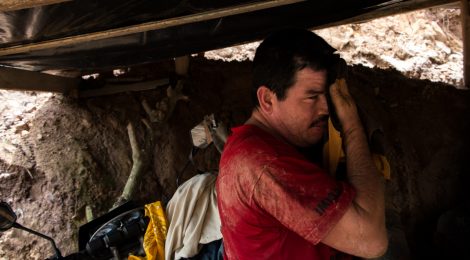
Mining in Nicaragua
The impact of mining in Nicaragua can be divided into three categories: the environmental impact, the social (human rights) impact, and the economic impact. While one can argue that mining has a positive economic impact (it does, after all, bolster GDP and provide salaries–albeit small salaries–for mine workers), the industry indubitably lends itself to incredible environmental and human rights abuses. Indeed, the Nicaraguan mining industry comes under fire for a variety of wrongs, including (but not limited to), the “appropriation of land belonging to others, forced evictions, lack of consultation, negligible compensation for affected populations, contamination of water, land, air, and the health of people, disregard for human rights and the simple distortion and falsification of the truth” (Mowforth).
From my study of the situation of indigenous peoples in the RAAN/RAAS, I have become familiar with the concept of forced evictions with nonexistent compensation. This legacy began with the British influx during the sixteenth and seventeenth centuries and continues to affect modern day residents of the region. In October, for instance, there was a New York Times article outlining the influx of “colonists” from the Pacific Coast who, “lured by the promise of gold” have recently taken to murdering indigenous peoples and seizing their land/resources [1].
After we studied this topic in class, what surprised me most was (1) the terrible effects of mining on health and (2) the startling degree to which mining decimates the Nicaraguan environment. In the video on gold mining techniques in Siuna by Ben Jastrzembski, I was absolutely astounded by the abundant use of mercury in the gold refining process. After watching the video, I was called back to a memory from preschool, when our teachers made a big deal about replacing the outdoor thermometers. These thermometers were dubbed “risky,” due to the trace amounts of mercury found safely encased within the glass exterior. Meanwhile, the man in the video was spreading the gold-mercury amalgam over a metal sheet with his bare hands, undoubtedly absorbing ridiculous amounts of toxins. The video then continued, noting that “the greatest environmental and health risk in artisanal gold mining occurs at the final stage when mercury is burned off the mercury-gold amalgam to isolate the gold” [2].
The most difficult part for me to reconcile was that all of this destruction (both to the health of mine workers and the surrounding environment) was easily preventable, with the use of a device called a “retort.” According to artisanal miner Paleah Black Moher, “Retorts are relatively inexpensive to build and operate, they are simple and intuitive in construction and use, and they can significantly reduce environmental contamination and human exposure. However, in order for them to do this successfully, proper instruction with sufficient education is crucial” [3].
On the whole, this investigation left me thinking: How can we change this norm and convince Nicaraguan miners that retorts are beneficial? And how much better could the quality of life in Nicaragua be because of it?
Featured Image: Mina de Ora by Sandrine Corbeil